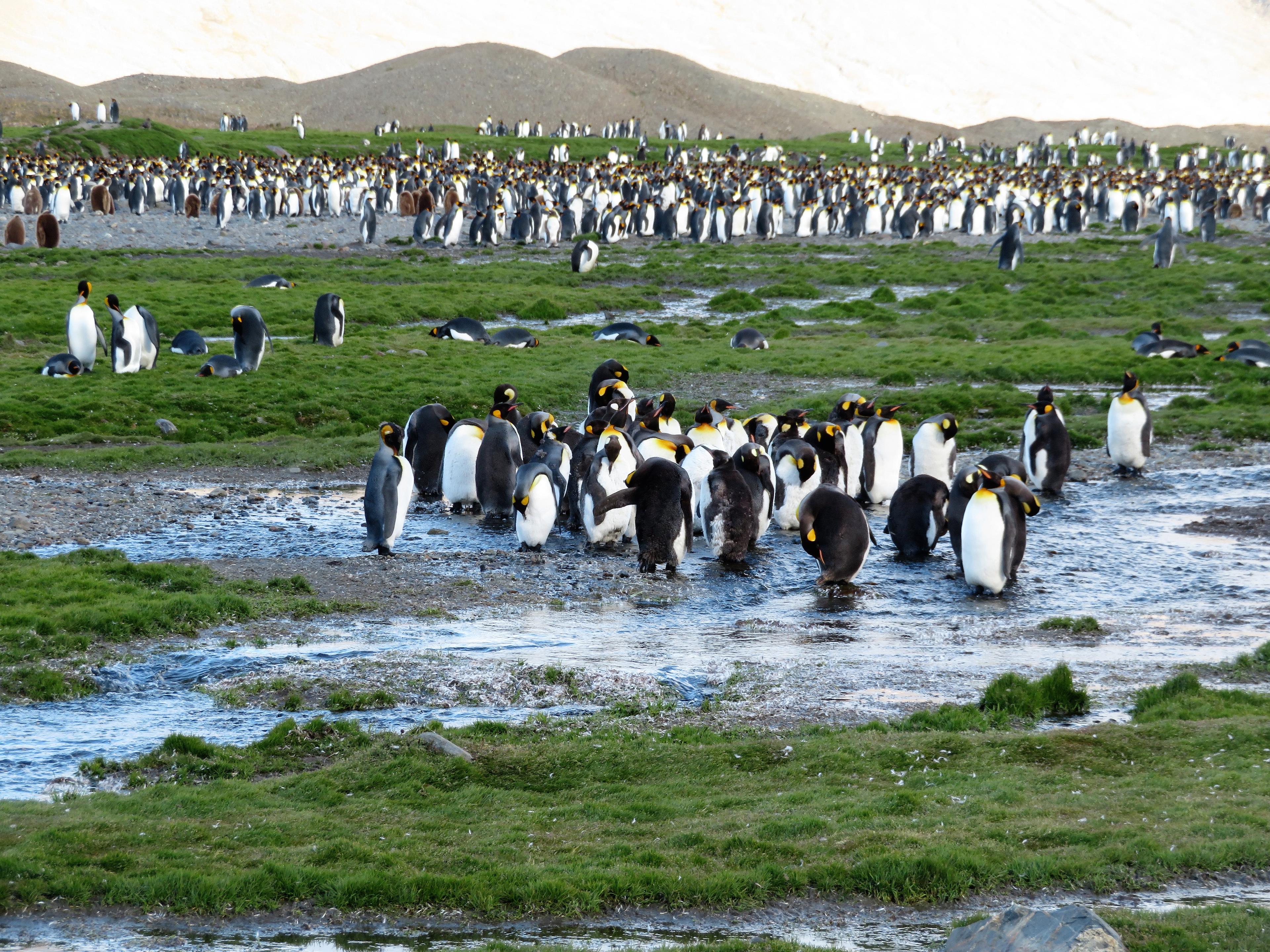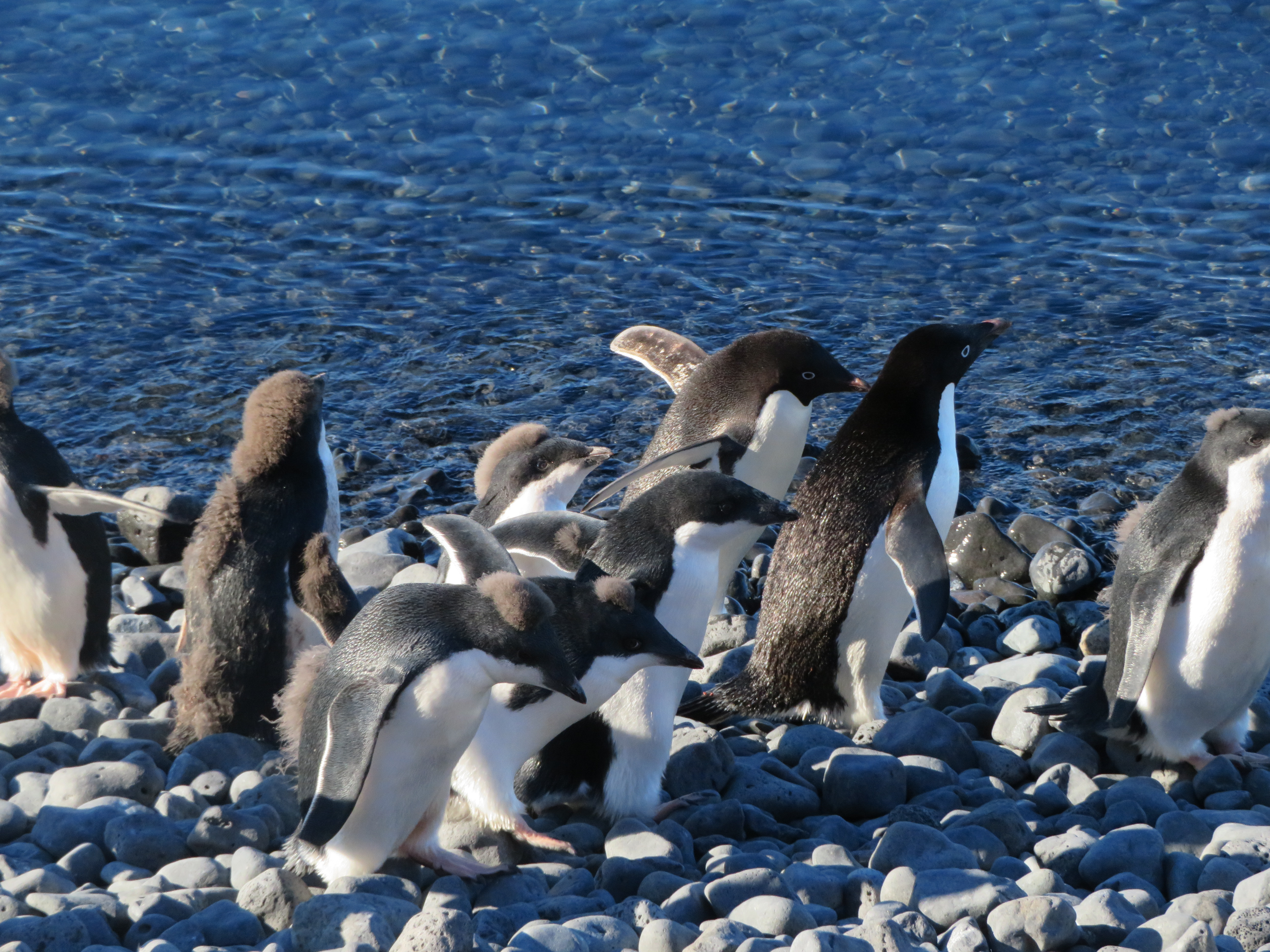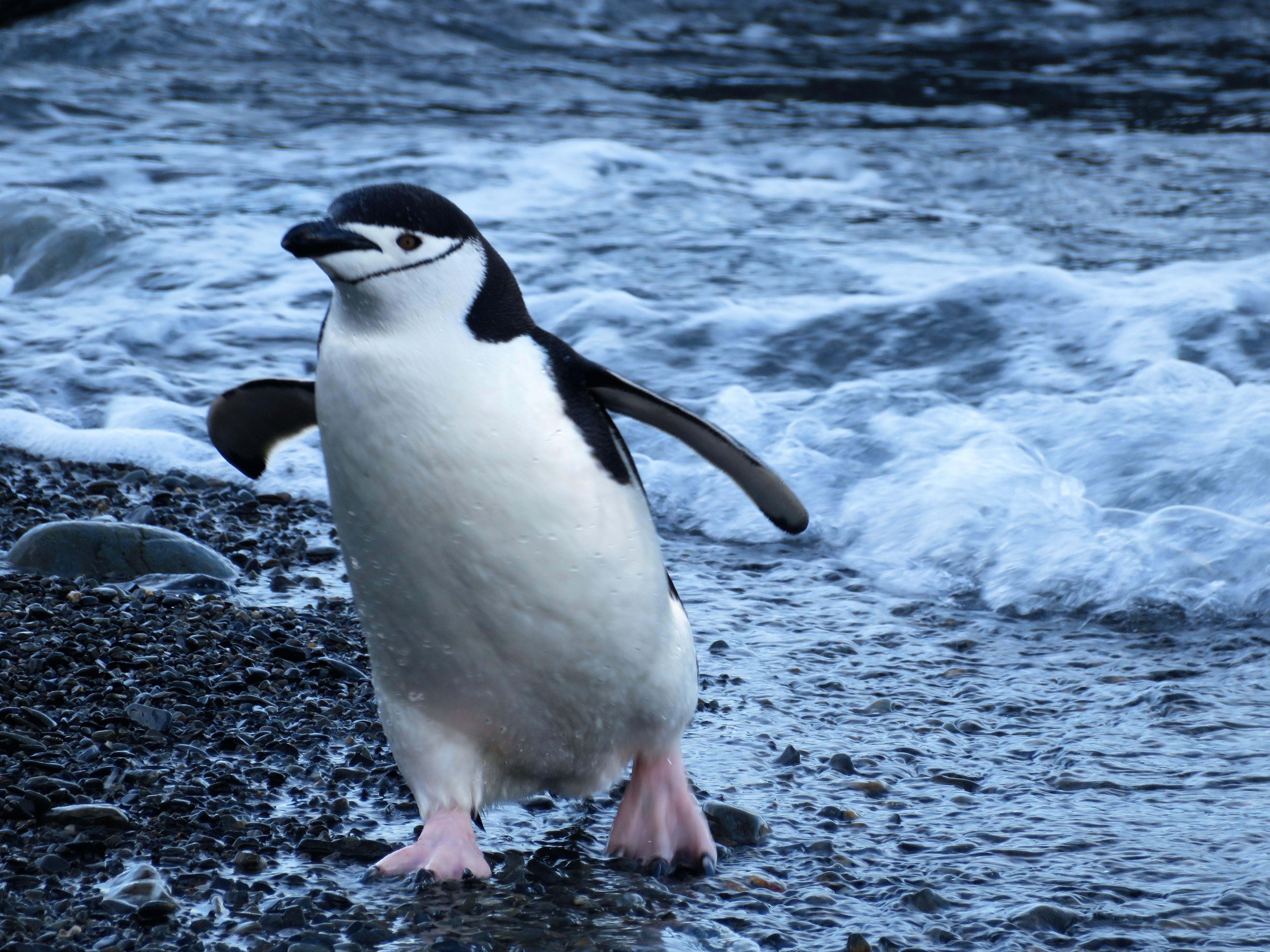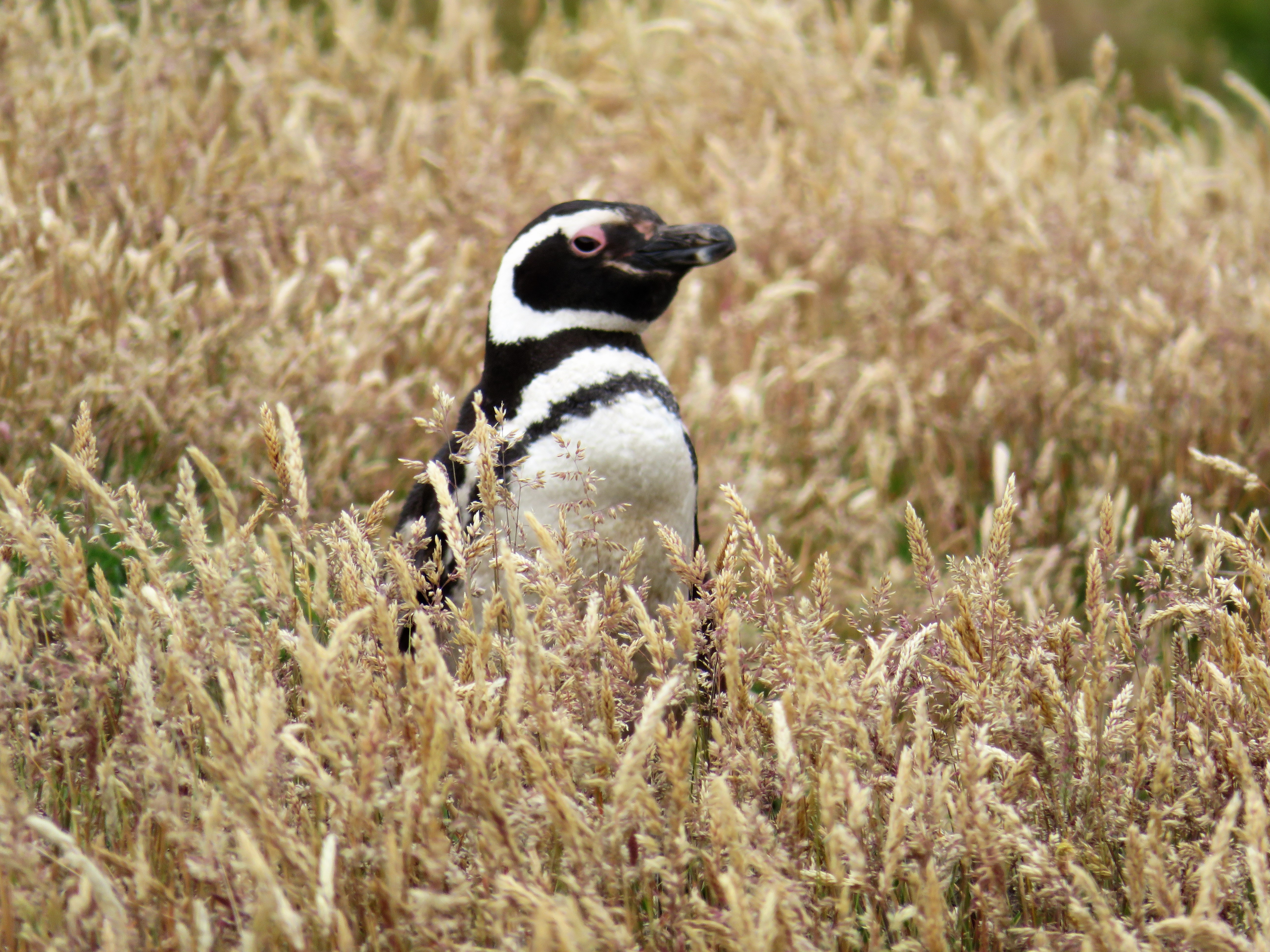Let’s talk penguins - what kinds you’ll see in Antarctica and what their life cycle is like.
Emperor Penguins: The stars of the show in Antarctica. They are the largest penguins in the world and the only penguins in the region that breed during the winter. They’re typically found in the Ross Sea and Weddell areas. Penguin chicks are born between the end of July and the middle of August. Mom lays the egg, then heads out to sea to feed. Once Mom comes back, Dad heads out to feed, then returns to help raise the chick.
Adelie Penguins: During the winter, you’ll find the Adelies on the northern Antarctic ice, while in the summer, they return to the coastline and Antarctic islands. They have one of the shortest breeding seasons - two eggs are laid mid-November and both Mom and Dad look after it in tightly packed breeding colonies. Once the chicks hatch in December, it’s just two or three weeks before they head out to sea.
Photo Credit: Susan Tuckey, Penguins2Polarbears, Adelie Penguins, Brown Bluff, Antarctic Peninsula - February 1, 2019
Gentoo Penguins: Look for the large breeding colonies of gentoos on the northern Antarctica Peninsula, South Sandwich Islands, South Shetlands, South Orkneys and in the sub-Antarctic Falklands and South Georgia. Courtship includes giving stones to the females so they may form their nests. Egg-laying occurs between June and December, depending on location and temperature. Gentoo chicks grow their flight features (or fledge) prior to becoming independent, unlike other penguins.
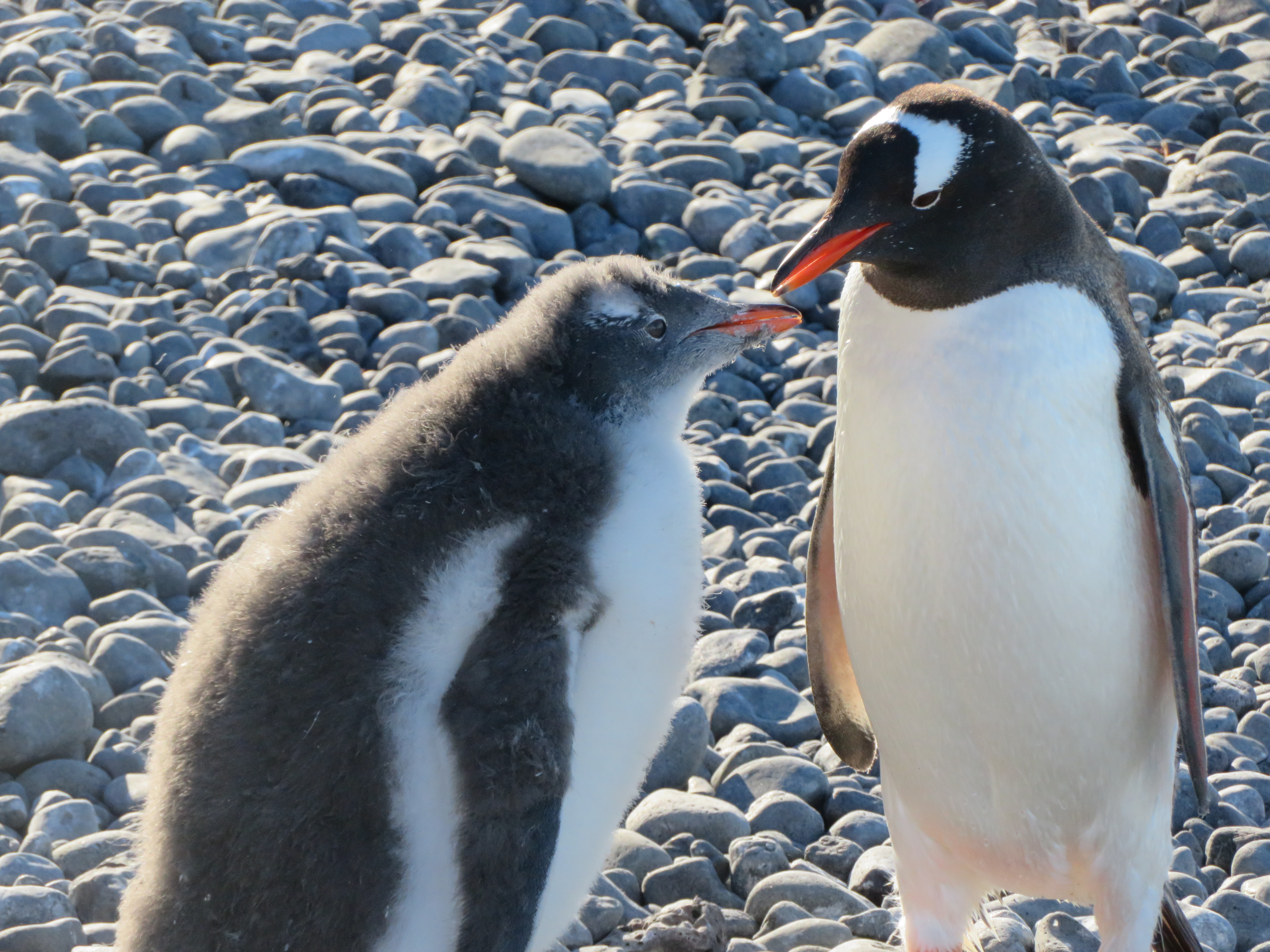
Chinstrap Penguins: You’re most likely to see a chinstrap penguin from your expedition ship in Antarctica, perhaps even a colony living on an iceberg in the open ocean - there are approximately seven million pairs of them in the world. Two chicks are typically born per mating season, between late February and early March.
Photo Credit: Susan Tuckey, Penguins2Polarbears, Chinstrap Penguin, Fortuna Bay, South Georgia - January 27, 2019
Macaroni Penguins: Nearly twinsies with chinstrap penguins, there are approximately 12 million pairs of macaronis in the world. They typically breed in the Falklands, South George, South Sandwich and South Orkney islands. Penguins arrive in late october in South Georgia and lay their eggs two weeks later.
Rockhopper Penguins: The rockhopper species have been divided into three distinct subspecies, tied to where they breed and their breeding behavior: northern, southern and eastern rockhoppers. On your Antarctic voyage, you’re most likely to see northern and southern rockhoppers. These are the smallest penguin species and, as their name suggests, prefer rocky, windswept shorelines.
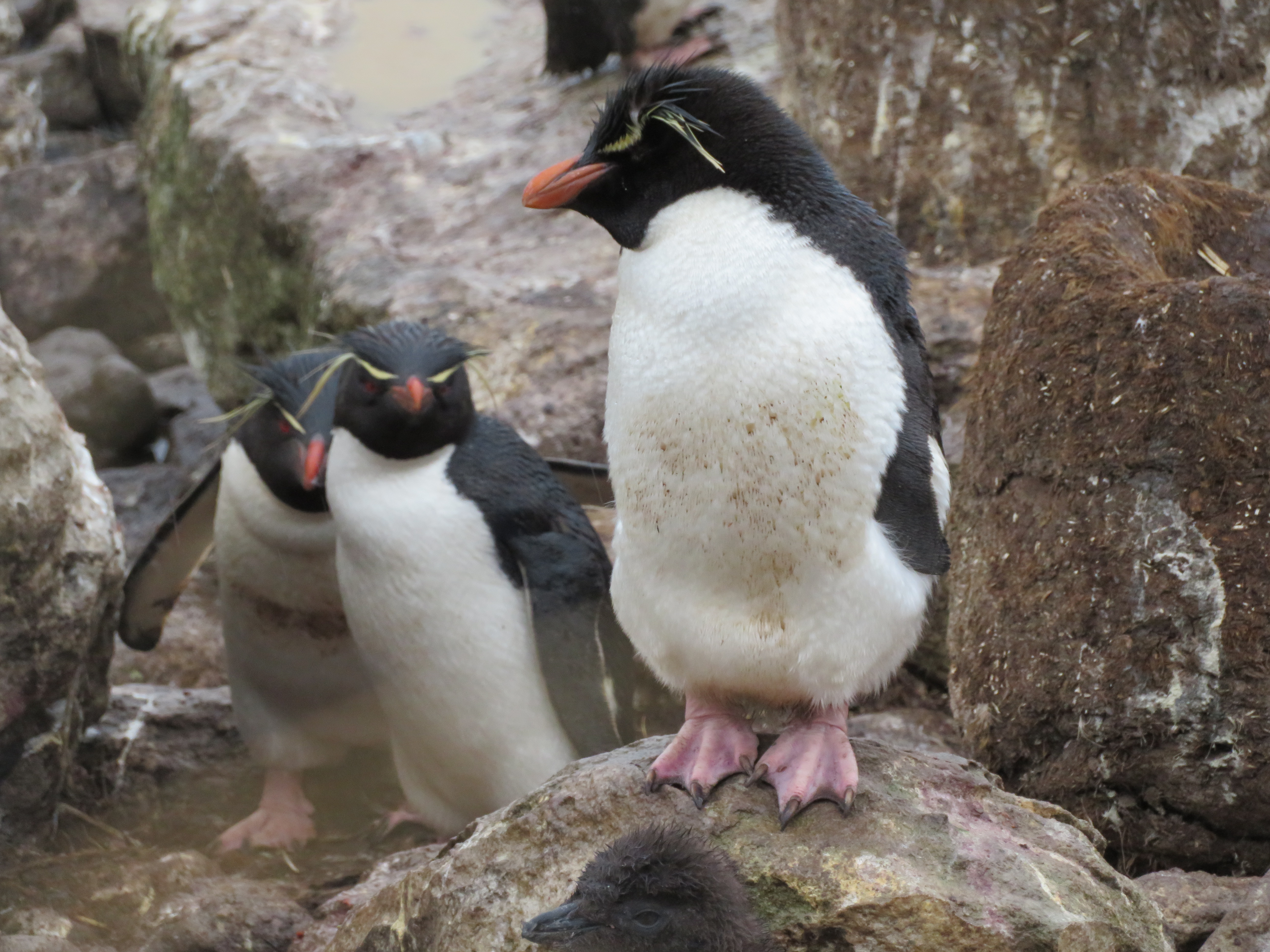
Magellanic Penguins: Related to Galapagos penguins, Humboldt penguins and African penguins, the Magellanic penguins are usually found in the Falkland Islands and sometimes in South Georgia and South Shetland.
Photo Credit: Susan Tuckey, Penguins2Polarbears, Magellanic Penguin, Carcass Island, Falklands - January 21, 2019
King Penguins: The second-largest penguin species after emperors, the king penguins live along the coastlines of the sub-Antarctic islands. They breed in massive colonies, like the St. Andrews Bay rookery of more than 150,000 penguins.
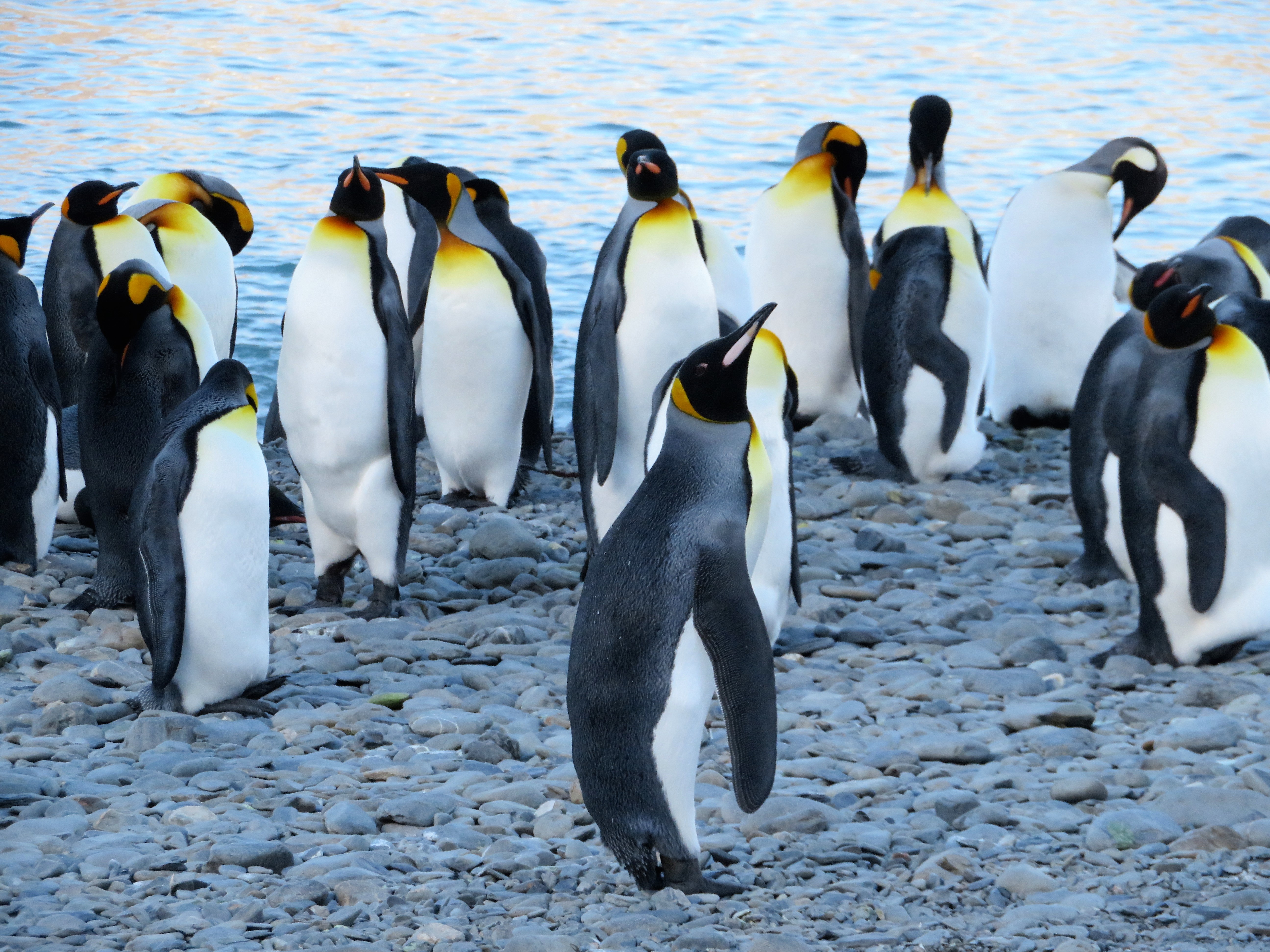
Now that you know WHAT you’ll see, we’ll focus on WHEN to see them
Month | Experience |
| Late October | This is when adelie, gentoo and chinstrap penguins return to land to begin the breeding season. Their courtship rituals kick off. In the Weddell Sea at this time, emperor penguin rookeries are filling up. |
| November | Come November, most expedition cruises lines will kick off their Antarctica voyages. As the days start to get longer, penguins chicks start to hatch. This is also the time for the added adventure of traveling into the Weddell Sea on an icebreaker to visit emperor penguin colonies. Penguins in the South Georgia and Falkland islands will also be mating at this time. By this time, adelie, chinstrap and gentoo penguins will have hopefully met their mate and are starting to prepare the nests. The king penguins of South Georgia have laid their eggs. Moms waddle around with the eggs between their feet and dads hunt for food during this time. The eggs will hatch in about a month and you’ll see darling little chicks darting about. |
| December | In the Falkland Islands, the penguin chicks start to hatch. In other areas of Antarctica, penguins are laying their eggs and sitting on their nests. |
| January | This is prime season for spotting fluffy, grey penguin chicks! The parent penguins are busily bringing food in from the sea to nurture their babes. Seals and whales put on a pretty good show at this time, too. |
| February | Whales start to steal the show here, but you’ll still have a good chance of seeing molting penguin chicks. Mom and Dad are busy catching krill to feed the chicks. Some of the matured penguins are seen swimming out in the ocean. |
Sold on penguins? Let’s talk Antarctica and the best small-ship expedition voyage for you!

